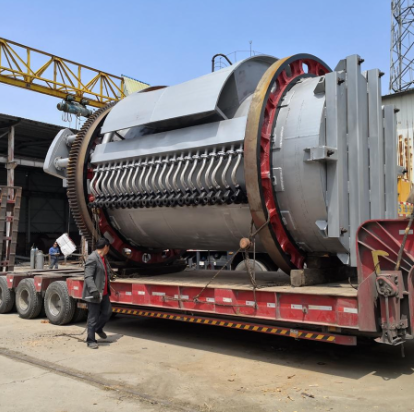NEWS&EVENTS
Home > News&Events > Company news > Briefly describe the process of PS converter smelting of matte (copper matte)
There are many kinds of matte blowing processes in industry, such as flash blowing, Mitsubishi blowing, etc., and the PS converter blowing is mainly introduced. Matte is a Cu-Fe-S system, with the main components being Cu₂S and FeS. In addition, there are small amounts of PbS, ZnS, Ni3S2, Fe3O4, etc. The purpose of blowing: to remove Fe and S and some other harmful impurities in matte by oxidation, thereby converting matte into crude copper. Blowing is a periodic operation: Slag-making period - FeS is strongly oxidized to generate FeO, and SO2 gas is released, and matte (CuS and FeS, etc.) becomes white matte (CuS): Copper-making period - Cu₂S is oxidized to CuO, and reacts with unoxidized Cu2S to generate metallic Cu and SO2.

There are two main reactions. 1. Slag formation reaction: This stage turns matte copper (Cu₂S and FeS, etc.) into white matte copper (Cu2S). First, FeS is oxidized to form slag and release a lot of heat 2FeS+3O2→2FeO+2SO2; 2FeO+SiO2→2FeO·SiO2. FeO will also be oxidized to Fe3O4 and then form slag: 6FeO+O2→2Fe3O4; 3Fe3O4+FeS+5SiO2→5(2FeO · SiO2)+SO2. 2. Copper formation reaction: After slag removal in the slag formation reaction stage, white matte copper is obtained, and further blowing is used to obtain crude copper: 2Cu₂S+3O2→2Cu₂O+2SO2,Cu2S+2Cu2O→6Cu+SO2. The crude copper obtained by blowing in the matte converter also contains other small amounts of impurity elements, such as Fe, Pb, Zn, Ni, As, Sb, S, Au, Ag, etc. Therefore, it needs to be further pyro-refined to make anode copper for electrolysis.
During the copper matte blowing process in the converter, when the FeS oxidation slag in the melt is removed, only Cu2S (i.e. white copper) remains in the furnace. Cu2S continues to be blown and oxidized to form Cu2O, which then reacts with the unoxidized Cu2S to obtain metallic copper. The slag-forming period in the converter blowing is to inject the copper matte into the converter in batches, gradually enrich it and obtain a sufficient amount of white copper matte (Cu2S). During the blowing operation, turn the furnace to the stop position and load the first batch of copper matte, generally until the tuyere is immersed about 200mm below the liquid surface. Then rotate the furnace body of the PS converter to the blowing position, and blow while rotating.